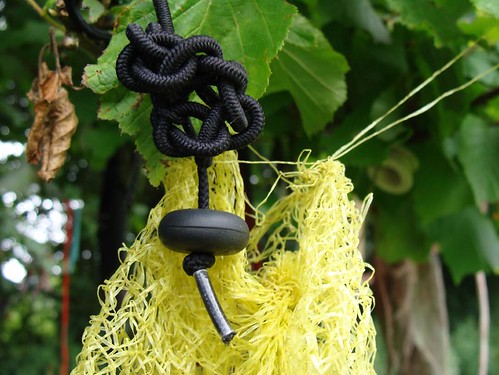” …hoodoo’s no different than regular praying. The prayers are always
answered, just that sometimes the answer’s no.” Bill Fitzhugh, Highway 61 Resurfaced
(Disclaimer: this is not a how-to guide for spell-casting. It’s a quick look at some of the background and theory. I take no responsibility for the results of anyone mistaking the below text for an instruction manual!)
Previously, I made the point that any theory or description of how magic works will be necessarily subjective, partial and on some level utterly incapable of fully describing what happens.
But I’m going to have a go anyway.
So, a magician takes patterns in their mind, forges meaningful connections between symbols, events, people and places and things. This set of patterns, their map of the universe if you like, orients them and shows possibilities of action.
What happens next?
That depends on the map.
There’s a few ways of describing the overall patterns – the meta-models – used in most magical styles. A good summation of four rough types is here. Using that scheme, I’d describe what I do as a mix of the Energy and Information models, with a side-order of the Psychological. I don’t work the Spiritual model much, except when needed (i.e if I encounter something that acts like a spirit!).
The Energy model – especially the Far-Eastern-styled variants – is pretty good for describing what I actually do and feel when I ‘do magic’. A ‘spell’ to me is basically a series of instructions imprinted onto personal energy and send out on a push of focussed emotion and intent. Like a martial arts punch – it’s not just the movement of hand and arm that matters, it’s the will behind it.
And, again like martial arts… it’s all about the breath.
If you look at most traditions, the words for magical energy all translate as ‘breath’. Mana, Prana, Baraka, Ch’i/Ki, Pneuma… they all seem to describe the same thing. Even a word like ‘conspiracy’ (which pops up now and again when talking about the occult…) means at root ‘those who breathe together’. The primacy of breath is one of the reasons so many systems instruct the beginner in some form of meditation – to teach breath control both as a quick-and-easy method for altering consciousness and as the basic tool of controlling and focussing one’s ch’i to be deployed magically. Meditation also teaches the student to cut down the signal-to-noise ratio in their mind, the better to sense the change in energies around them. To ‘detect magic’.
Again I should point out… it’s only a model. The use of the word ‘energy’ in mysticism, especially these days, has been haphazard to say the least. Probably the only word misused more these days is ‘vibrations’. Or possibly ‘quantum’.
Using the Chinese term Ch’i has a lot of utility for me, mainly because it’s considered a universal energy, pretty much like The Force. It scales up nicely – the same system used in acupuncture theory or martial arts is applied on a larger scale in feng-shui. It also ties in to my own Taoist tendencies belief-wise. So, I’ll be using it a lot here.
(I’ve always had what could be called a sensitivity to ‘magical energy’, to both my own ch’i and that in my environment. I usually feel it as a kind of temperature shift, sometimes as a tingle in my peripheral nervous system, sometimes even as a kind of ghost-of-a-smell. I’m pretty sure that this sensory input is only a symbol for whatever it is I’m actually getting information about/from, in the same way that the senses we call ‘smell’ and ‘taste’ don’t actually feel like molecules rubbing against our mucous membranes. It’s a shorthand, a symbol, like everything about magic – and it’s a good idea to remind yourself of that fact on a regular basis.)
Back to that spell… the next point to consider is, what is the spell for?
It can be for anything the magician can imagine. Though the intent alters the kind of emotional set-and-setting for the spell, it doesn’t usually change the mechanics of casting – though of course some techniques work better than others, depending on the intent. (You probably wouldn’t want to focus on feelings of anger and violence when attempting healing…) The key thing here is the magician must seriously want the instructions to be carried out, they suit their mood to the intent, and that they formulate their instructions reasonably clearly.
I could go on at great length here about the morality of magic use – and I may do so at a later date.
(Short version – I’ve seen no sign of any kind of automatic ‘Law of Three-fold Return’ or similar retribution governing spell use. The morality of magical action falls to the caster. Though Karmic payback isn’t guaranteed, often like energies will attract like… but it’s not inevitable that ‘bad magic’ will lead to a bad end. Unfortunately.
My own morality leans heavily toward the issue of consent. I never initiate magical combat – only defend or counter-attack when hostilities are begun. I don’t push healing unless I’m asked. And I never, ever, work love spells… to my mind, they’re the psychic version of date-rape drugs.)
The traditional old-school, Spirit-model-based magical styles of spell-casting are usually lengthy processes. The mage would have to thoroughly research the timing (both logistically and astrologically) of the casting, determine which spirits and entities have to be invoked or kept away, lay out surroundings which are conducive to those spirits, select tools in keeping with the occasion, make a magically clear and safe space, probably observe some kind of ritual cleansing beforehand, cast a circle, make ritual obeisance to the pantheon involved… and then finally cast the spell.
All very well and good… and those High Magic rites can have great beauty and efficacy.
But from my perspective, most of that prep falls under the heading of ‘getting into the mind-set’, reinforcing the associations in the pattern. For most people, generating the emotional charge needed for working magic requires a dramatic shift from ‘ordinary’ reality – and the borders of the magical reality they are creating have to be fiercely guarded, lest they fall. They’re making a kind of Temporary Autonomous Zone, a brief suspension of the Ordinary rules. Though this separation of the magical and the mundane has its uses, I find it mostly a false distinction.
With practice – and a good understanding of one’s internal patterns of symbol and ch’i – one can generate the right mood with a few muttered words, humming a snatch of a tune, or simply taking a slow deep breath.
The emotional push, the ch’i-generation/harnessing needed for magic, can be found in anything which matters to the mage and fits their internal map. Some find it in rituals as described above. Some get to it through sexual activity. Some from dancing, from the emotional climax of a piece of a music or a movie or beating the Boss Level in a computer game. Anything can work. The closer it fits both the intent of the spell and the internal pattern-map of the mage, is usually the better.
The mood is found, the intent created in the magicians mind… then with a push (or a shout, or a waving of wands, or an orgasm, or…) the spell is cast. Instructions/requests given to the Universe to change according to the magician’s will.
Some kind of ‘banishing’ should then follow. Even if there’s no clear delineation between the magical and non-magical space, the energies recently harnessed should be allowed to settle and disperse, any entities which may have manifested given leave to depart… and generally the whole place cleaned and tidied up thoroughly. The residue of a space where this is not done can deform, grow toxic… and sometimes attract unpleasantness. (Think of the neglected remains of a picnic, attracting ants. Replace ‘ants’ with ‘demons’ or ‘bad vibes’. You get the idea.)
Then comes the hard part… seeing if the spell ‘worked’.
Like everything else in magic, deciding whether or not a casting has actually had any effect is just about as subjective as you can get. (And that’s before you even start to worry about how it worked!) Quite often, the exact results aren’t quite as the caster imagined them… usually the changes in the world are small.
Maybe that’s all magic is – a way of nudging chance in a tiny way, allowing the repercussions to spiral outward like the butterfly wing altering the quantum flow of…
Bugger it. I said ‘quantum’.
——
(Next on Guttershaman – much, much more on tradition, ‘authenticity’ and such. And I use ‘the S word’ again.)






